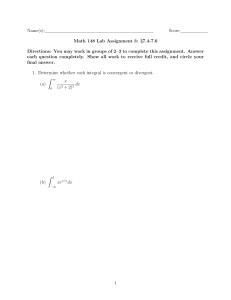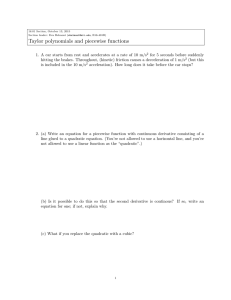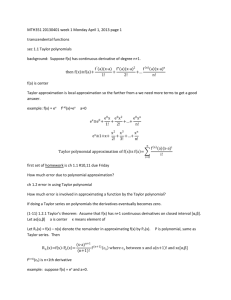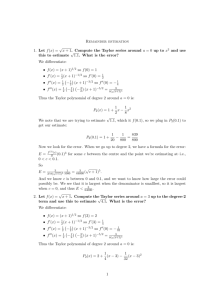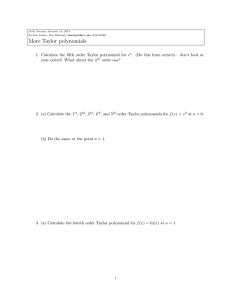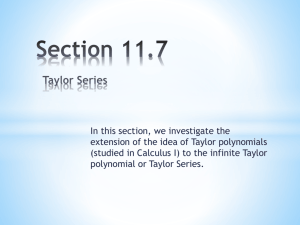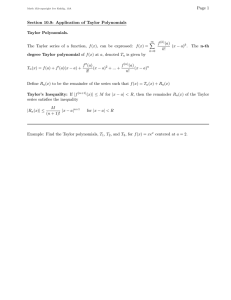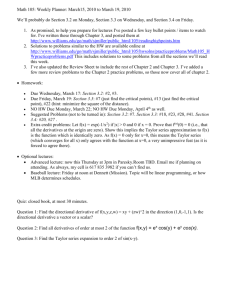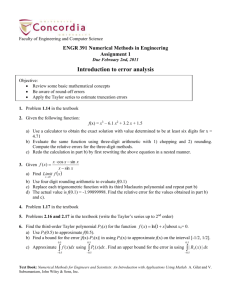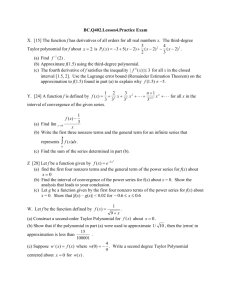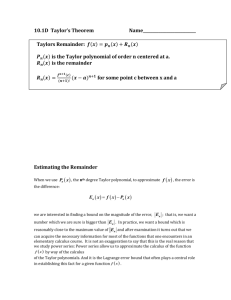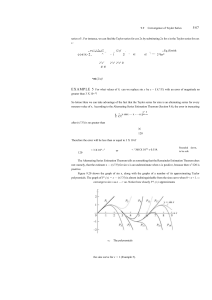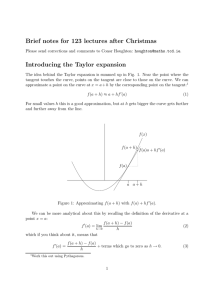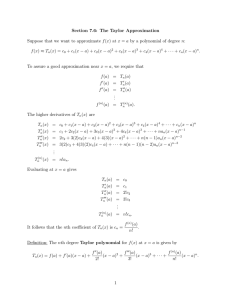AP Calculus Student Study Session
advertisement
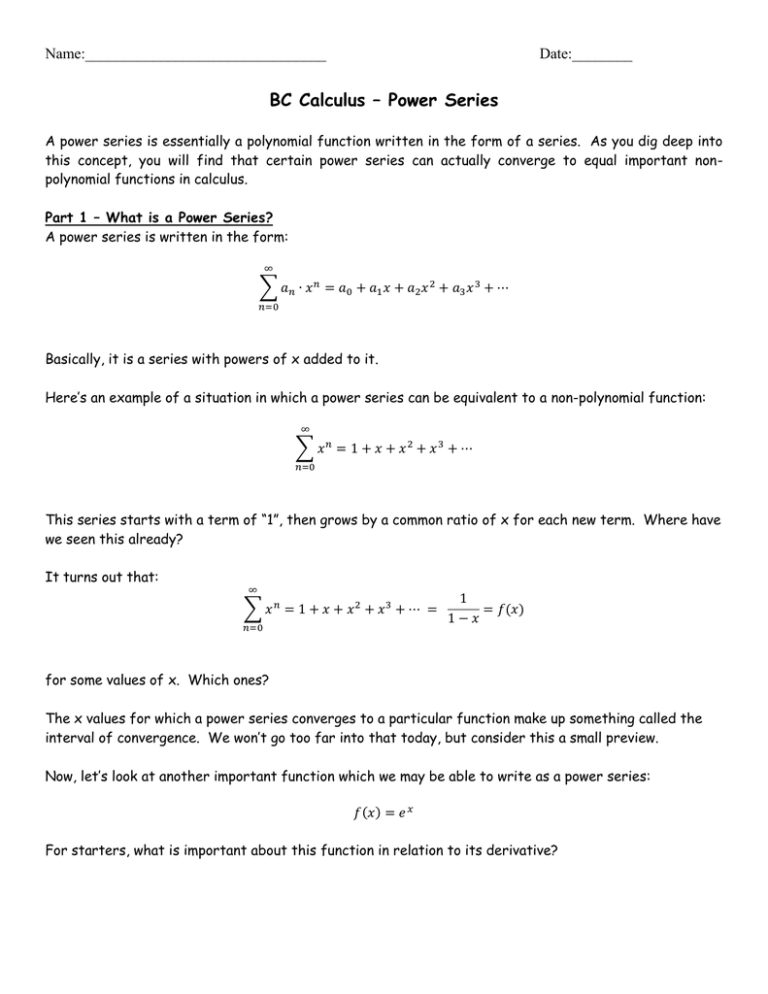
Name:________________________________ Date:________ BC Calculus – Power Series A power series is essentially a polynomial function written in the form of a series. As you dig deep into this concept, you will find that certain power series can actually converge to equal important nonpolynomial functions in calculus. Part 1 – What is a Power Series? A power series is written in the form: ∞ ∑ 𝑎𝑛 ∙ 𝑥 𝑛 = 𝑎0 + 𝑎1 𝑥 + 𝑎2 𝑥 2 + 𝑎3 𝑥 3 + ⋯ 𝑛=0 Basically, it is a series with powers of x added to it. Here’s an example of a situation in which a power series can be equivalent to a non-polynomial function: ∞ ∑ 𝑥𝑛 = 1 + 𝑥 + 𝑥2 + 𝑥3 + ⋯ 𝑛=0 This series starts with a term of “1”, then grows by a common ratio of x for each new term. Where have we seen this already? It turns out that: ∞ ∑ 𝑥𝑛 = 1 + 𝑥 + 𝑥2 + 𝑥3 + ⋯ = 𝑛=0 1 = 𝑓(𝑥) 1−𝑥 for some values of x. Which ones? The x values for which a power series converges to a particular function make up something called the interval of convergence. We won’t go too far into that today, but consider this a small preview. Now, let’s look at another important function which we may be able to write as a power series: 𝑓(𝑥) = 𝑒 𝑥 For starters, what is important about this function in relation to its derivative? We’re going to use this to help us. Start with: 𝑓(𝑥) = 𝑒 𝑥 = 𝑎0 + 𝑎1 𝑥 + 𝑎2 𝑥 2 + 𝑎3 𝑥 3 + ⋯ After several steps, we find that: 𝑓(𝑥) = 𝑒 𝑥 = 1 + 𝑥 + 𝑥2 2 + 𝑥3 6 𝑥𝑛 + ⋯ = ∑∞ 𝑛=0 𝑛! Now, try a similar process on your own with the function: 𝑔(𝑥) = 𝑠𝑖𝑛𝑥 𝑔(𝑥) = sin(𝑥) = Wouldn’t it be nice if there was a formula that allowed us to jump right to this result? Well, thanks to a fellow named Taylor, there is. Part 2 – Taylor Series and Taylor Polynomials Taylor found that, under certain conditions, the following power series will converge to a function, 𝑓(𝑥). ∞ 𝑓(𝑥) = ∑ 𝑛=0 𝑓 (𝑛) (𝑐) (𝑥 − 𝑐)𝑛 𝑛! Where 𝑓 (𝑛) is the “nth” derivative of 𝑓(𝑥) and “c” is something called the center. We will mostly just use zero as our center today, but there will be times that you use some other number. Now, that you’ve seen this formula, write power series expansions of the following functions, with center of zero: cos(𝑥) = ln(1 + 𝑥) = Taylor Polynomials It is important to mention that a Taylor Series is not an approximation of a function. It converges exactly to that function and is, therefore, equivalent. A Taylor polynomial is simply a polynomial formed by taking a specific number of terms from a Taylor series. Taylor polynomials are generally specified by degree, meaning the highest power of x. For example, the 4th degree Taylor polynomial of 𝑒 𝑥 is given by: 𝑒𝑥 ≈ 1 + 𝑥 + And this is an approximation! Part 3 – Sample AP Problems: 1997 #24 𝑥2 𝑥3 𝑥4 + + 2 6 24 1998 #14 1998 #27 1998 #89

